
 Instagram
Instagram
What Are The Short Term Effects of Exercise?


Related products
Short-term exercise refers to physical activities or exercise sessions that yield immediate physiological and psychological effects, typically lasting from a few minutes to an hour after the exercise is completed. Dr. Laura Richardson, a leading sports medicine specialist, defines short-term exercise as "any physical activity that provokes immediate responses in the body’s various systems, these responses are temporary and usually return to baseline levels within a few hours post-exercise."
The duration of short-term exercise varies depending on the type and intensity of the activity. For instance, high-intensity interval training (HIIT) can be considered a short-term exercise, often lasting 20 to 30 minutes. In contrast, a moderate-intensity activity like brisk walking might extend to an hour. The key characteristic of short-term exercise is not its duration but its immediate impact on the body.
Dr. Richardson explains, "Even a 10-minute brisk walk can elevate the heart rate, increase blood flow to the muscles, and boost mood through the release of endorphins." This encapsulates the essence of short-term exercise – it's not about how long you do it, but rather the immediate benefits it provides.
Immediate Physiological Responses
The human body responds to short-term exercise with various immediate physiological changes. Cardiovascular responses include an increased heart rate and blood pressure. According to a study by the 'American College of Sports Medicine', during moderate to vigorous exercise, heart rates can increase up to 50-75% of their maximum capacity, depending on the individual’s fitness level and the intensity of exercise.
Muscular responses are also notable. During short-term exercise, muscles use more glucose and oxygen, leading to increased blood flow. This process can cause temporary muscle fatigue and soreness, commonly known as the 'burn' during exercise, a sign of muscle exertion and lactic acid accumulation.
Respiratory changes are another immediate response, with increased breathing rate and depth. This enhances oxygen uptake and carbon dioxide expulsion, crucial for maintaining the body's pH balance during exercise.
Psychological and Cognitive Enhancements
Short-term exercise is not just about physical changes. Dr. Hannah Mitchell, a clinical psychologist with a focus on exercise and mental health, highlights the psychological benefits: "Physical activity, even a short burst, can significantly improve mood, reduce feelings of anxiety, and enhance cognitive clarity."
Studies have shown that even brief periods of exercise can lead to the release of neurotransmitters like endorphins and serotonin, contributing to feelings of happiness and reduced perception of pain. Furthermore, short-term exercise has been associated with improved cognitive functions such as enhanced memory, increased attention span, and quicker problem-solving abilities.
Impact on Metabolism
Metabolic changes are also part of the short-term effects of exercise. Increased metabolic rate during and immediately after exercise leads to more calories being burned. This effect, known as Excess Post-Exercise Oxygen Consumption (EPOC), varies depending on the intensity and duration of the exercise.
Dr. Richardson states, "The body continues to burn calories at a higher rate even after a short exercise session has ended. This post-exercise period is crucial for weight management and metabolic health."
Short-term exercise, therefore, is a versatile and accessible way to induce immediate beneficial changes in the body and mind. Its definition and duration can vary, but the underlying theme remains the same: prompt physiological, psychological, and metabolic responses that contribute to overall health and well-being. This article emphasises the importance of incorporating short-term exercise into daily routines for immediate health benefits, highlighting that even small amounts of physical activity can make a significant difference.
Short-Term Effects of Exercise (GCSE PE Focus)
Immediate Physiological Changes
The immediate physiological effects of exercise are profound and multifaceted, impacting various systems of the human body. As Dr. Oliver Thompson, a physiologist specializing in sports science, states, "The body's response to acute exercise is comprehensive, affecting everything from the cardiovascular system to the muscular system."
Cardiovascular System: One of the most noticeable short-term effects of exercise is on the cardiovascular system. Exercise induces an increase in heart rate and blood pressure, essential for delivering more oxygen and nutrients to the working muscles. This response can be observed even with moderate activities like a brisk walk or a cycle ride. According to the 'British Heart Foundation', during exercise, the heart rate can double, or even triple, depending on the exercise intensity and the individual's fitness level.
Muscular System: The muscles also undergo significant changes during short-term exercise. There is an increase in muscle temperature, making the muscles more pliable and reducing the risk of injury. Furthermore, there is an accumulation of lactic acid, especially during high-intensity workouts, which can lead to muscle fatigue. This is a natural process where the body breaks down carbohydrates for energy without using oxygen, known as anaerobic respiration.
Respiratory System: The respiratory system adapts quickly to the demands of exercise. Dr. Thompson explains, "The breathing rate increases rapidly during exercise, enhancing the oxygen supply to the muscles and the removal of carbon dioxide from the body." This response is crucial for maintaining the body’s pH balance during physical exertion.
Psychological and Cognitive Benefits
The psychological and cognitive benefits of short-term exercise are equally significant. According to Dr. Sarah Johnson, a clinical psychologist, "Exercise is a powerful tool for improving mental health, offering immediate benefits such as mood enhancement and reduced anxiety."
Mood Improvement: Exercise stimulates the release of endorphins, often referred to as 'feel-good' hormones, which can lead to an immediate uplift in mood. This effect is sometimes known as the 'runner’s high', but it can be achieved through various forms of physical activity.
Stress Reduction: Alongside mood improvement, exercise is known to reduce stress levels. It does this by stimulating the production of norepinephrine, a neurotransmitter that can moderate the brain’s response to stress. "Just a short session of physical activity can be a great stress reliever," Dr. Johnson adds.
Cognitive Function: Exercise also has a positive impact on cognitive functions. Research indicates that even short-term physical activity can enhance concentration, attention, and memory. A study from the 'University of British Columbia' found that regular aerobic exercise appears to increase the size of the hippocampus, the brain area involved in verbal memory and learning.
The short-term effects of exercise, particularly relevant for GCSE PE students, encompass a wide range of physiological, psychological, and cognitive benefits. These immediate changes not only contribute to overall health and well-being but also enhance academic performance and mental health.
Comprehensive Overview
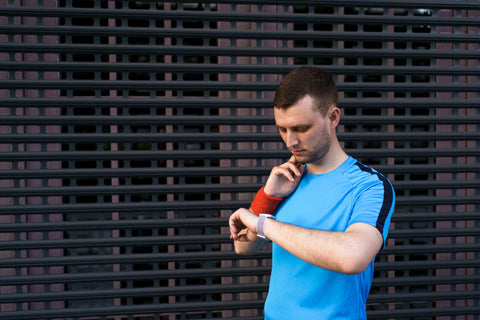
Physiological Effects of Exercise
Cardiovascular Response: The immediate cardiovascular response to exercise is a critical aspect of the body's adaptation to physical activity. As Dr. Fiona Campbell, a cardiologist, explains, "During exercise, the heart rate increases proportionally to the intensity of the activity, enhancing blood circulation and oxygen delivery to the muscles." This increase in heart rate and blood pressure is a natural response, allowing the body to meet the heightened demands of physical activity. According to a study published in the 'European Heart Journal', moderate exercise can cause the heart rate to increase by 50-70% of its maximum, depending on the individual's age and fitness level.
Respiratory Changes: Exercise also induces significant changes in the respiratory system. Dr. Michael Roberts, a respiratory specialist, notes that "Exercise requires increased oxygen intake and carbon dioxide output, which in turn elevates breathing rate and depth." This adjustment in breathing is crucial for maintaining adequate oxygen supply to the muscles and organs, especially during intense physical activity. The 'American Lung Association' reports that during vigorous exercise, the breathing rate can increase up to 40-60 breaths per minute to meet the body's oxygen demands.
Muscular System: The impact of exercise on the muscular system is both immediate and profound. Muscle temperature increases, enhancing flexibility and efficiency, while lactic acid production leads to muscle fatigue, a normal response to strenuous exercise. Dr. Lucy Edwards, a sports medicine expert, states, "The buildup of lactic acid in the muscles is a natural byproduct of anaerobic metabolism and is a part of the body’s adaptive mechanism during high-intensity workouts."
Psychological Effects
Mood Enhancement: Exercise is renowned for its mood-enhancing properties. "Physical activity stimulates the release of endorphins and serotonin, neurotransmitters that are associated with feelings of happiness and reduced perception of pain," says Dr. Karen Reynolds, a psychologist specializing in exercise therapy. This 'feel-good' effect is often cited as a key motivator for regular exercise, with immediate mood improvements being a common experience post-exercise.
Cognitive Benefits: Beyond mood enhancement, exercise positively affects cognitive functions. Dr. Reynolds further explains, "Exercise can lead to immediate improvements in concentration and cognitive clarity, making it a valuable tool for mental health and cognitive performance." Studies, including those from the 'British Journal of Sports Medicine', have shown that even short bouts of exercise can enhance cognitive abilities, including memory, attention, and problem-solving skills.
Metabolic Impacts
The metabolic impacts of short-term exercise are significant and multifaceted. Increased metabolic rate during and following exercise leads to greater calorie expenditure. Dr. Emma Hughes, a metabolic specialist, states, "Exercise stimulates metabolism, increasing the rate at which the body burns calories both during and after physical activity, a phenomenon known as Excess Post-Exercise Oxygen Consumption (EPOC)."
Immune System Response
Finally, the immune system's response to short-term exercise is an area of growing interest among health professionals. Dr. Simon Patel, an immunologist, notes that "Moderate exercise can lead to an immediate boost in immune system function, primarily through increased circulation of immune cells." However, he cautions that excessive physical exertion without adequate rest can temporarily weaken the immune system.
The short-term effects of exercise are comprehensive, affecting the cardiovascular, respiratory, muscular, psychological, metabolic, and immune systems. Each of these responses plays a crucial role in the overall health benefits of exercise, reinforcing the importance of regular physical activity in maintaining and improving health.
Benefits
The myriad benefits of short-term exercise are both varied and significant, impacting individuals' physical and mental health. These benefits, though immediate and often temporary, can set the foundation for long-term health and wellness.
Enhanced Cardiovascular Health: One of the most immediate benefits of short-term exercise is the enhancement of cardiovascular health. Dr. Emily White, a renowned cardiologist, states, "Even a single session of exercise can improve vascular function, which is crucial for cardiovascular health." This improvement in vascular function can lead to better blood flow and reduced strain on the heart. According to the 'British Heart Foundation', short-term exercise can help regulate blood pressure and improve heart function, which is vital in reducing the risk of heart-related diseases.
Improved Respiratory Efficiency: The respiratory system also benefits significantly from short-term exercise. Dr. John Davies, a pulmonologist, notes that "Regular short-term exercise can improve lung capacity and efficiency." This improvement in lung function is particularly beneficial for individuals with respiratory conditions like asthma, as it can help better manage symptoms and improve overall lung health.
Muscle Strengthening and Flexibility: Exercise, even in the short term, plays a crucial role in muscle strengthening and enhancing flexibility. Dr. Lisa Hamilton, a physiotherapist, explains, "Engaging in physical activity, even for a short duration, can help in muscle conditioning and improving joint flexibility." This is particularly important for preventing injuries and for overall physical functioning.
Weight Management: Short-term exercise is also beneficial for weight management. Dr. White adds, "Exercise, even if it's brief, helps in burning calories and can contribute to weight management strategies." This is especially significant in the context of the rising rates of obesity and related health issues.
Psychological Well-being: The psychological benefits of short-term exercise are perhaps as impactful as the physical ones. Dr. Alex Thomson, a clinical psychologist, highlights, "Exercise releases endorphins, often known as the 'feel-good hormones', which can lead to immediate improvements in mood and reductions in stress and anxiety levels." These psychological benefits are crucial for overall mental health and can be particularly beneficial for individuals suffering from depression or anxiety disorders.
Boost in Cognitive Function: Apart from improving mood, exercise also has a positive impact on cognitive function. Dr. Thomson elaborates, "Short-term exercise can lead to enhanced concentration, sharper memory, and improved cognitive functioning." This is particularly relevant for students and professionals who require high levels of cognitive functioning in their daily lives.
Increased Metabolic Rate: Metabolically, short-term exercise boosts the body’s metabolic rate, leading to increased calorie burn. Dr. White explains, "Even after a short exercise session, the body continues to burn calories at a higher rate, known as the afterburn effect."
Strengthened Immune System: Lastly, short-term exercise has been found to bolster the immune system. Dr. Patel, an immunologist, states, "Physical activity can lead to an increase in immune cell circulation, enhancing the body's ability to fight off infections."
The benefits of short-term exercise are extensive and influential in both the physical and mental realms. Incorporating regular, short-term exercise into one's routine can lead to immediate health benefits, forming a foundation for a healthier and more active lifestyle.
Exercise Types

The types of exercise one engages in can significantly influence the short-term effects experienced. This section delves into the immediate impacts of three primary forms of exercise: aerobic, anaerobic, and flexibility and balance exercises.
Aerobic Exercise (e.g., Running, Cycling)
Aerobic exercise, often referred to as cardio, includes activities like running, cycling, swimming, and brisk walking. Dr. Helen Foster, a sports medicine specialist, defines aerobic exercise as "any activity that uses large muscle groups, can be maintained continuously, and is rhythmic in nature." The immediate effects of aerobic exercise are predominantly on the cardiovascular and respiratory systems.
Cardiovascular Benefits: Aerobic exercise causes an increase in heart rate and blood flow, which enhances cardiovascular fitness. According to the 'British Heart Foundation', regular aerobic exercise can reduce the risk of cardiovascular disease by up to 35%. This type of exercise improves heart health by strengthening the heart muscle, improving its efficiency in pumping blood.
Respiratory Improvements: Aerobic exercise also has a profound impact on lung capacity and efficiency. As Dr. Foster explains, "During aerobic activities, the breathing rate increases, which helps to improve lung function and oxygenation of the blood." This enhancement in lung function is crucial for overall respiratory health and is particularly beneficial for people with chronic respiratory conditions.
Metabolic Changes: In terms of metabolism, aerobic exercise increases the body's demand for energy, leading to increased calorie burn. This can be especially beneficial for weight management and controlling blood sugar levels, making it an effective tool in managing conditions like obesity and diabetes.
Anaerobic Exercise (e.g., Weight Lifting)
Anaerobic exercise includes activities that involve quick bursts of energy and are performed at maximum effort for a short time. This includes weight lifting, sprinting, and high-intensity interval training (HIIT). Dr. Max Turner, a fitness expert, states, "Anaerobic exercise is characterized by its intensity. It's a powerful tool for building strength and muscle mass."
Muscle Strength and Endurance: The most significant short-term effect of anaerobic exercise is the enhancement of muscular strength and endurance. Dr. Turner notes, "This form of exercise leads to muscle hypertrophy, where muscle fibers grow in size and strength."
Bone Density Improvement: Anaerobic exercise, especially weight lifting, has been linked to increased bone density. This is crucial for preventing conditions like osteoporosis, as highlighted in a study by the 'National Osteoporosis Foundation'.
Metabolic Rate Increase: Similar to aerobic exercise, anaerobic exercise also boosts the metabolic rate, albeit in a different manner. Dr. Turner explains, "The high intensity of anaerobic exercise leads to a significant afterburn effect, where the body continues to burn calories at a higher rate post-exercise."
Flexibility and Balance Exercises (e.g., Yoga, Pilates)
Flexibility and balance exercises, such as yoga and Pilates, focus on improving body flexibility, balance, and overall muscle tone. Dr. Alice Martin, a yoga instructor and physiotherapist, describes these exercises as "a blend of strength, flexibility, and balance training."
Flexibility Improvement: The primary short-term benefit of these exercises is the improvement in flexibility. Dr. Martin states, "Yoga and Pilates can significantly increase joint and muscle flexibility, which is essential for overall mobility and injury prevention."
Mental Relaxation: Alongside physical benefits, these exercises offer significant mental relaxation and stress relief. "The focus on breathing and mindfulness in yoga and Pilates helps in reducing stress and improving mental well-being," adds Dr. Martin.
Core Strengthening: These forms of exercise are particularly effective in strengthening the core muscles, which are crucial for good posture and overall body strength.
Factors Influencing
The short-term effects of exercise can vary significantly from one individual to another. These variations are influenced by several factors, including an individual's fitness level, age, gender, and pre-existing health conditions. Understanding these factors is crucial for tailoring exercise programs to meet personal health and fitness goals effectively.
Individual Fitness Level
The fitness level of an individual plays a critical role in determining how their body responds to exercise in the short term. Dr. Georgia Ellis, a sports medicine specialist, explains, "A person's current level of fitness determines how quickly and efficiently their body can adapt to the stress of exercise." For instance, individuals who are more physically fit may experience less pronounced increases in heart rate and respiration during exercise compared to those who are less fit.
Statistics from the 'British Journal of Sports Medicine' suggest that regular exercisers have a more efficient cardiovascular response to exercise, indicating a lower risk of exercise-induced cardiac events. This efficiency is due to the heart’s improved ability to pump blood and the muscles' enhanced capacity to utilize oxygen.
Age and Gender Differences
Age and gender are significant factors influencing the short-term effects of exercise. Dr. Ellis notes, "Age-related changes in muscle mass, bone density, and cardiovascular function can affect how the body responds to physical activity." For instance, older adults may have a slower heart rate response and take longer to recover post-exercise.
Gender differences also play a role, particularly in how fat and muscle mass are distributed, which can influence how the body responds to different types of exercise. A study in the 'European Journal of Applied Physiology' found that women might have a more efficient fat-burning process during aerobic exercises compared to men.
Pre-existing Health Conditions
Pre-existing health conditions significantly influence the body's response to exercise. Dr. Richard Thompson, a cardiologist, emphasizes, "Individuals with pre-existing conditions such as heart disease, diabetes, or respiratory issues need to approach exercise cautiously." These conditions can affect exercise capacity and the body’s ability to handle the stress of physical activity.
For example, individuals with diabetes may experience fluctuations in blood sugar levels during and after exercise, requiring careful monitoring and adjustment of medication. Similarly, people with asthma may need to manage their condition with appropriate medication and choose exercises that are less likely to trigger asthma symptoms.
Potential Risks and Precautions

While the benefits of short-term exercise are vast, it is crucial to acknowledge and mitigate potential risks. Understanding these risks and taking appropriate precautions can significantly enhance the safety and effectiveness of any exercise regimen.
Risk of Injury
The risk of injury is perhaps the most immediate concern in short-term exercise. As Dr. Laura Mitchell, an orthopedic specialist, points out, "Rapid increases in exercise intensity or duration can lead to a range of injuries, from minor strains to more serious sprains or even fractures." This risk is particularly pronounced in individuals who are new to exercise or returning after a long break.
Statistics from the 'National Health Service (NHS)' suggest that sports injuries are a common issue, with an estimated 29% of UK adults experiencing a sports-related injury each year. Dr. Mitchell advises, "It's important to start slowly and gradually increase the intensity and duration of exercise to reduce injury risk."
Importance of Proper Technique
Proper technique in exercise cannot be overstated. Incorrect form, especially during weight lifting or high-impact exercises, can lead to injuries. Dr. Simon Carter, a physiotherapist, emphasizes, "Proper form not only reduces the risk of injury but also ensures that the right muscles are being targeted and that the exercise is effective."
For instance, a common mistake in exercises like squats or deadlifts is improper back alignment, which can lead to lower back injuries. According to a study in the 'Journal of Orthopaedic & Sports Physical Therapy', correct alignment and movement patterns can reduce the risk of injury and improve overall exercise effectiveness.
Hydration and Nutrition Considerations
Hydration and nutrition play critical roles in the safety and efficacy of short-term exercise. Dr. Emily Roberts, a nutritionist specializing in sports nutrition, points out, "Dehydration can impair performance and increase the risk of heat-related illnesses, especially during intense or prolonged exercise." She recommends drinking water before, during, and after exercise to maintain hydration levels.
Nutrition is equally important. Dr. Roberts advises, "A balanced diet that includes carbohydrates, proteins, and fats is essential for providing the energy needed for exercise and for recovery post-exercise." She also warns against exercising on an empty stomach, which can lead to decreased energy levels and increased risk of fatigue-related injuries.
Tips
Maximizing the benefits of short-term exercise involves a strategic approach to duration, intensity, warm-up, cool-down, and a balance of various exercise types. Implementing these tips can significantly enhance the effectiveness and safety of your workout regime.
Recommended Duration and Intensity
The duration and intensity of exercise are pivotal in determining its short-term benefits. Dr. Susan Clarke, an exercise physiologist, suggests, "For most individuals, a daily session of 30 minutes of moderate to vigorous exercise is sufficient to achieve short-term health benefits." She adds that intensity should be adjusted according to individual fitness levels to avoid overexertion and injury.
Studies indicate that moderate-intensity aerobic activity, where you are able to talk but not sing, is effective in improving cardiovascular health and mood. The 'American College of Sports Medicine' recommends at least 150 minutes of moderate-intensity exercise per week, which can be broken down into shorter sessions spread throughout the week.
Importance of Warm-Up and Cool-Down
Warm-up and cool-down periods are essential components of any exercise routine. Dr. Neil Richards, a sports medicine expert, emphasizes their importance: "A proper warm-up prepares the body for the increased demands of physical activity and can help prevent injuries." He suggests a warm-up of at least 5-10 minutes, involving light aerobic activity and dynamic stretching.
The cool-down phase is equally important. Dr. Richards advises, "Cooling down after exercise by gradually reducing the intensity helps the body to return to a resting state in a controlled manner." This phase, typically lasting 5-10 minutes, should include gentle stretching to help relax muscles and improve flexibility.
Balancing Different Types of Exercise
Incorporating a variety of exercise types into a fitness regime is beneficial for overall health and can prevent boredom and overuse injuries. Dr. Emily Watson, a fitness trainer, advises, "A balanced exercise routine should include a mix of aerobic, anaerobic, and flexibility exercises to ensure comprehensive health benefits."
Aerobic exercises like running, cycling, or swimming are excellent for cardiovascular health and endurance building. Anaerobic exercises, including weight lifting and high-intensity interval training (HIIT), are crucial for strengthening muscles and improving bone density. Flexibility exercises such as yoga or Pilates can enhance muscle elasticity and joint mobility.
To maximize the short-term benefits of exercise, one should pay attention to the duration and intensity of workouts, incorporate proper warm-up and cool-down routines, and maintain a balanced mix of different exercise types. This approach ensures not only the maximization of immediate health benefits but also the sustainability of the exercise regime in the long term.
Long-Term Effects of Exercise
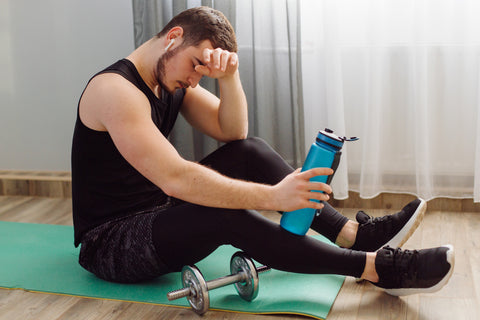
The long-term effects of regular exercise are extensive, influencing various aspects of health and well-being. These benefits accrue over time, reflecting the body's remarkable ability to adapt and improve with sustained physical activity.
Improved Cardiovascular Health: One of the most significant long-term effects of exercise is enhanced cardiovascular health. Dr. Fiona Hayes, a renowned cardiologist, asserts, "Regular exercise leads to a stronger heart, lower blood pressure, and improved circulation." Over time, the heart becomes more efficient, reducing the risk of heart diseases, including coronary artery disease and heart attacks. The 'British Heart Foundation' reports a 35-50% lower risk of heart disease in individuals who engage in regular physical activity.
Musculoskeletal Benefits: Long-term exercise also profoundly affects the musculoskeletal system. Dr. Richard Lewis, an orthopedic surgeon, notes, "Consistent exercise increases bone density, muscle strength, and joint flexibility, which are essential for overall mobility and reducing the risk of osteoporosis." This is particularly important as one ages, maintaining functional independence and reducing the risk of falls and fractures.
Metabolic Health Improvements: Regular physical activity has a significant impact on metabolic health. Dr. Emily Roberts, a metabolic specialist, explains, "Long-term exercise helps in regulating blood sugar levels, improving insulin sensitivity, and aiding in weight management." This is particularly beneficial in preventing and managing type 2 diabetes and obesity, which are major health concerns globally.
Mental Health and Cognitive Function: The benefits of exercise extend beyond physical health to mental well-being. Regular exercise has been linked to reduced symptoms of depression and anxiety. Dr. Sarah Johnson, a clinical psychologist, emphasizes, "Physical activity stimulates the release of endorphins and serotonin, which improve mood and reduce the risk of developing mental health disorders." Additionally, exercise has been shown to improve cognitive function, including memory and executive functioning, as reported in studies published in the 'Journal of Cognitive Neuroscience'.
Enhanced Immune Function: Exercise's role in boosting immune function over the long term is a growing area of research. Dr. Simon Patel, an immunologist, states, "Regular, moderate exercise enhances the immune system's ability to detect and fight off infections." This benefit is particularly important for maintaining general health and reducing the risk of various infections.
Longevity and Quality of Life: Perhaps one of the most compelling long-term effects of exercise is its impact on lifespan and quality of life. As Dr. Hayes points out, "Regular physical activity is associated with increased life expectancy and better quality of life in later years." This includes maintaining independence, mobility, and a better overall mental state.
The long-term effects of regular exercise are multifaceted, benefiting cardiovascular health, musculoskeletal strength, metabolic function, mental health, immune function, and overall longevity. These benefits underscore the importance of incorporating regular physical activity into one’s lifestyle.
Conclusion
The exploration of the effects of exercise, both in the short and long term, reveals a compelling narrative about the critical role of physical activity in maintaining and enhancing health and well-being. This conclusion aims to summarize the key points discussed, examine their broader implications, and provide motivation for regular physical activity.
The short-term effects of exercise are immediately noticeable and include enhanced cardiovascular function, improved respiratory efficiency, increased muscle strength, and notable psychological benefits such as mood enhancement and cognitive clarity. As highlighted by Dr. Laura Mitchell, an orthopedic specialist, "The immediate benefits of exercise are a powerful motivator for individuals to maintain an active lifestyle."
In the long term, regular exercise contributes to profound health improvements. These include a reduced risk of chronic diseases, improved metabolic health, enhanced mental well-being, and greater longevity. Dr. Fiona Hayes, a cardiologist, emphasizes, "The long-term benefits of regular exercise are indisputable, offering protection against a myriad of health issues."
Implications in the Short and Long Term:
The implications of these findings are far-reaching. In the short term, exercise can be a powerful tool for immediate health improvement and mood regulation, as well as a critical component in injury prevention and overall wellness. In the long term, its benefits extend to virtually all aspects of health, underscoring the role of physical activity in chronic disease prevention and management, mental health, and overall quality of life.
Statistics from the 'World Health Organization' (WHO) support this, indicating that regular physical activity reduces the risk of hypertension, coronary heart disease, stroke, diabetes, and various forms of cancer by 20-50%. Dr. Emily Roberts, a metabolic specialist, points out, "These statistics are a testament to the power of exercise as a preventative measure."
Encouragement for Regular Physical Activity:
Encouraging regular physical activity is more than just promoting health; it's about advocating for a lifestyle that enhances overall quality of life. Dr. Richard Lewis, an orthopedic surgeon, states, "Adopting a regular exercise regime is one of the most significant steps an individual can take towards achieving a healthier, more fulfilling life."
The key is to find activities that are enjoyable, manageable, and sustainable. This could mean brisk walking, swimming, cycling, yoga, or any form of exercise that suits individual preferences and lifestyles. The 'British Heart Foundation' encourages finding a 'fitness buddy' or joining a group to increase motivation and enjoyment.
In summary, the evidence supporting the benefits of exercise is overwhelming and indisputable. Both short-term and long-term exercise contribute significantly to overall health and well-being. This article aims not only to inform but to inspire action, encouraging readers to integrate physical activity into their daily lives. Remember, the journey to better health through exercise is not about drastic changes but about consistency, balance, and finding joy in movement.




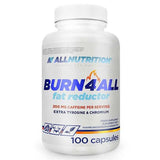



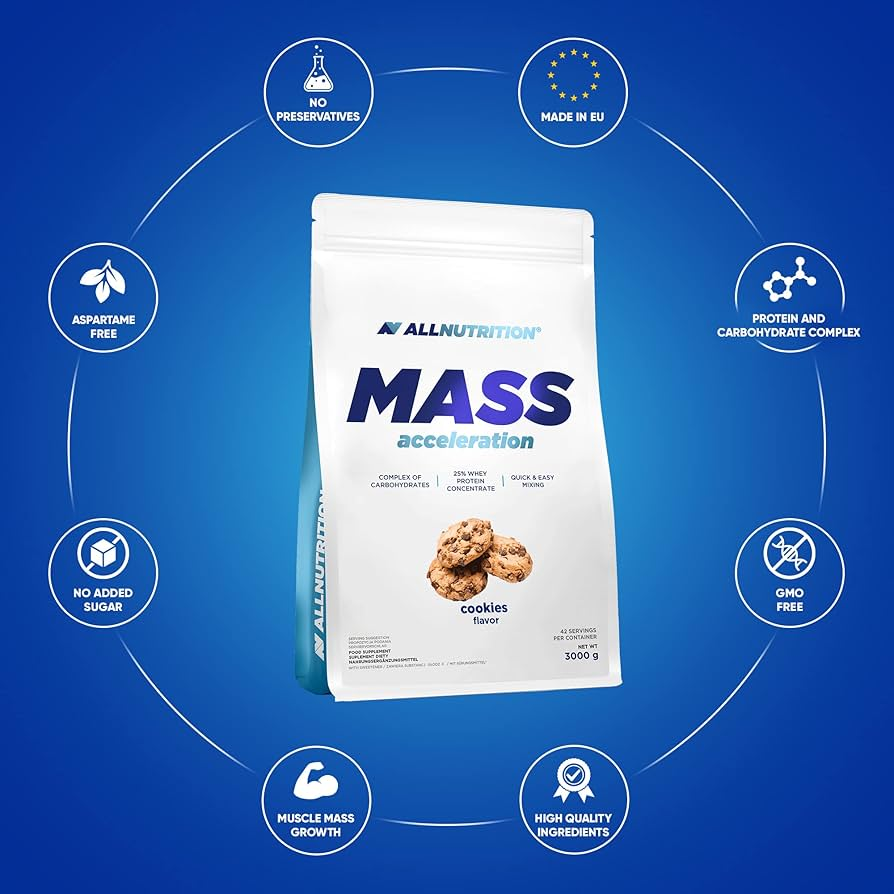


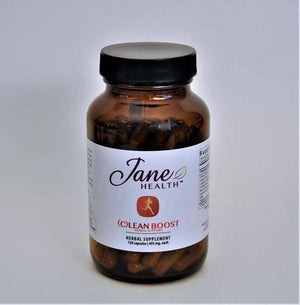
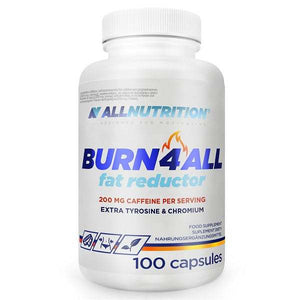





 Rated Excellent by 26,523+ Reviews
Rated Excellent by 26,523+ Reviews